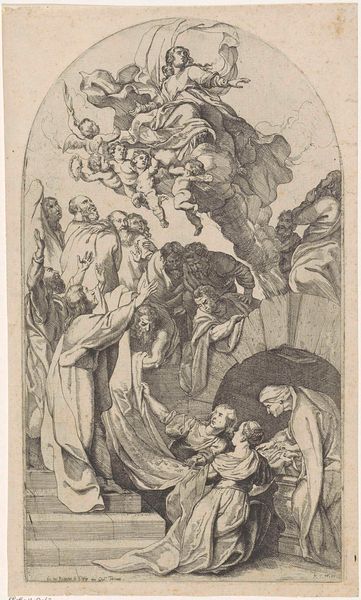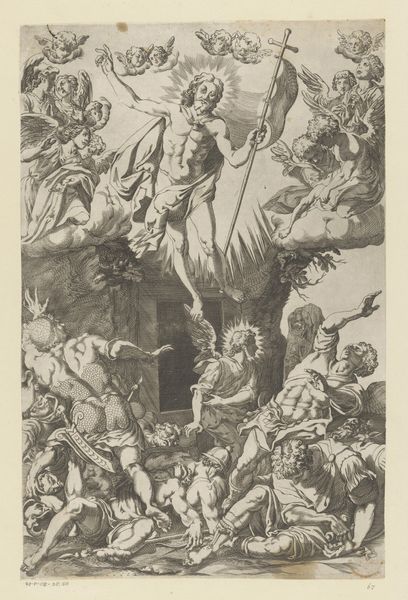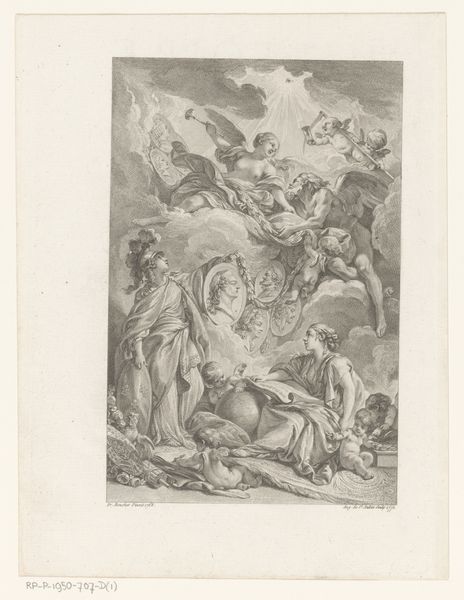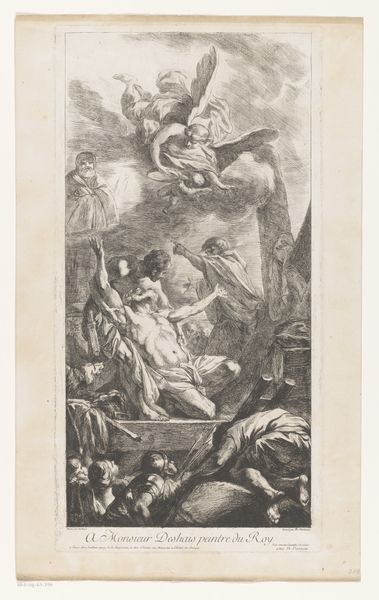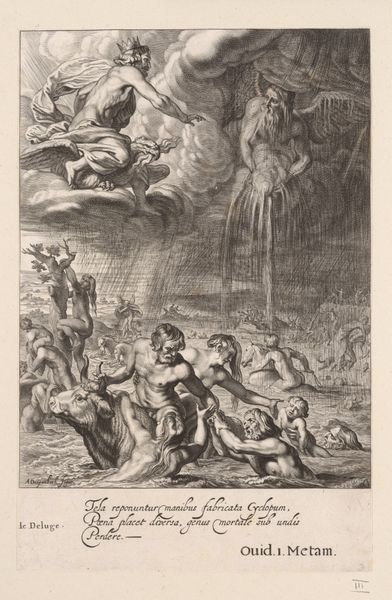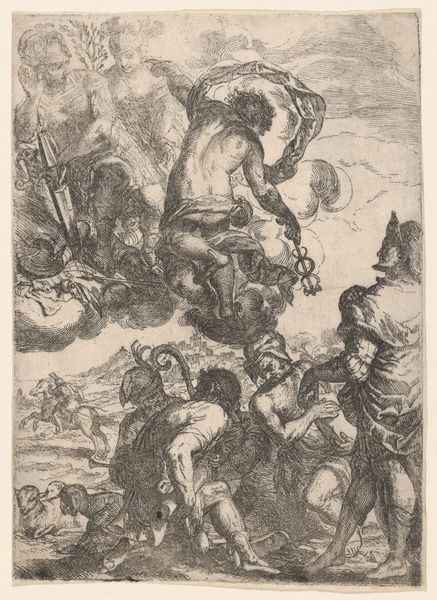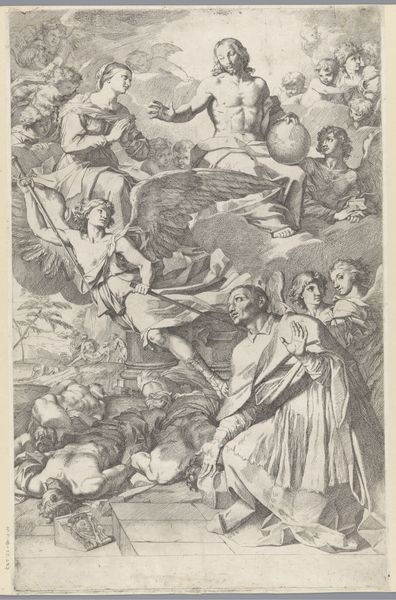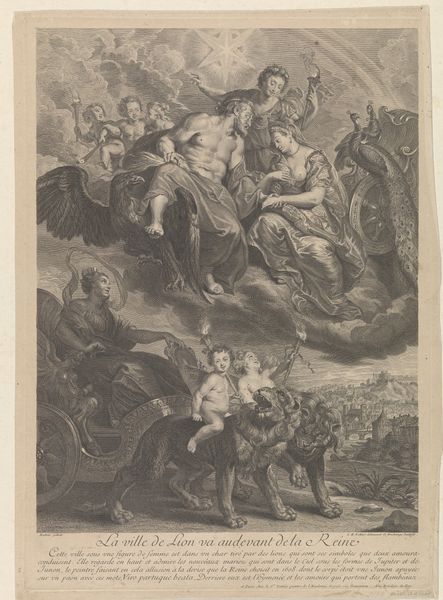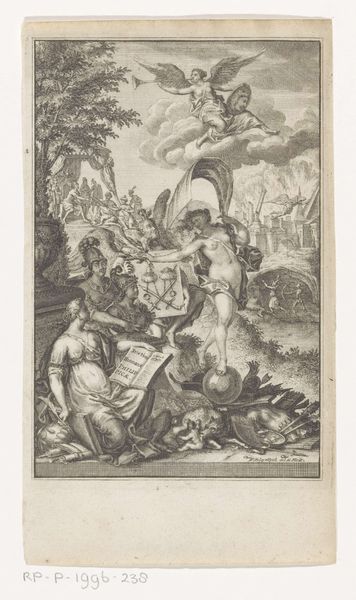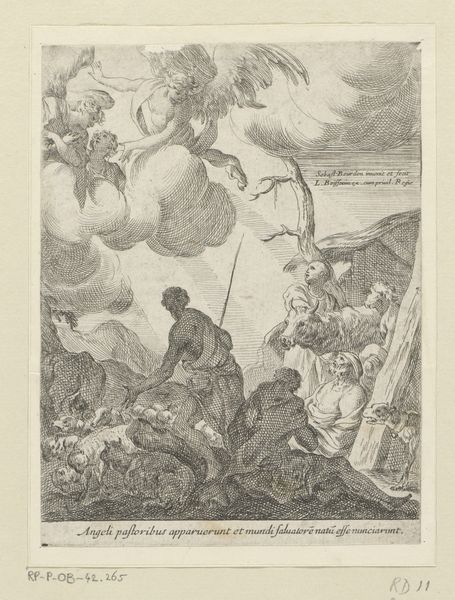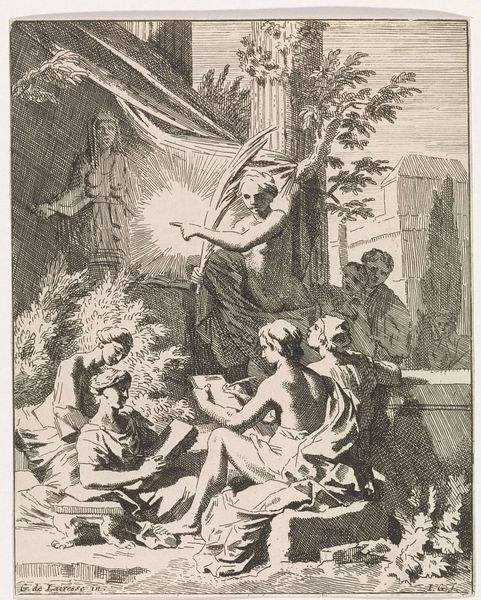
drawing, print, engraving
#
drawing
#
baroque
# print
#
figuration
#
history-painting
#
engraving
Dimensions: sheet: 10 1/4 x 6 9/16 in. (26 x 16.7 cm)
Copyright: Public Domain
Editor: We are looking at Pietro Testa's "St. Carlo Borromeo surrounded by angels", made sometime between 1650 and 1670. It’s an engraving, and the composition feels incredibly active, almost frenetic with all the figures. What are your thoughts when you see this piece? Curator: Considering its materiality, it is imperative to think about how prints like this operated in society. As engravings, these images are products meant for circulation and distribution. The line work and detail testify to Testa's technical skill but also to the labor involved in producing multiple impressions, influencing the dissemination of religious iconography. It bridges the gap between 'high art' and artisanal production. Editor: So, the process of making many copies is important? How would it have affected society back then? Curator: Absolutely. Consider the social context: images of saints were powerful tools for the Catholic Church. Engravings, relative to unique paintings, made these images accessible to a wider audience, spreading specific doctrines and influencing devotional practices on a much larger scale. Who consumed these images and for what purposes are crucial questions to ask. The print becomes a tool. Editor: I never thought about it that way – the image as a commodity. Curator: Exactly. It invites a discussion about art consumption and value. What labor went into creating the printing plates, and who profited from it? These prints democratized religious imagery to some extent. So by analyzing its production, circulation and consumption, we begin to question traditional notions of artistic genius. Editor: I’m starting to see how the print's very existence changes our understanding of its religious purpose. Curator: Precisely. It becomes a tangible link to the material culture and economic systems of the 17th century. This lens really gives it another dimension. Editor: I now see how vital it is to analyze beyond just what's represented to examine its broader cultural and historical footprint. Thank you.
Comments
No comments
Be the first to comment and join the conversation on the ultimate creative platform.
